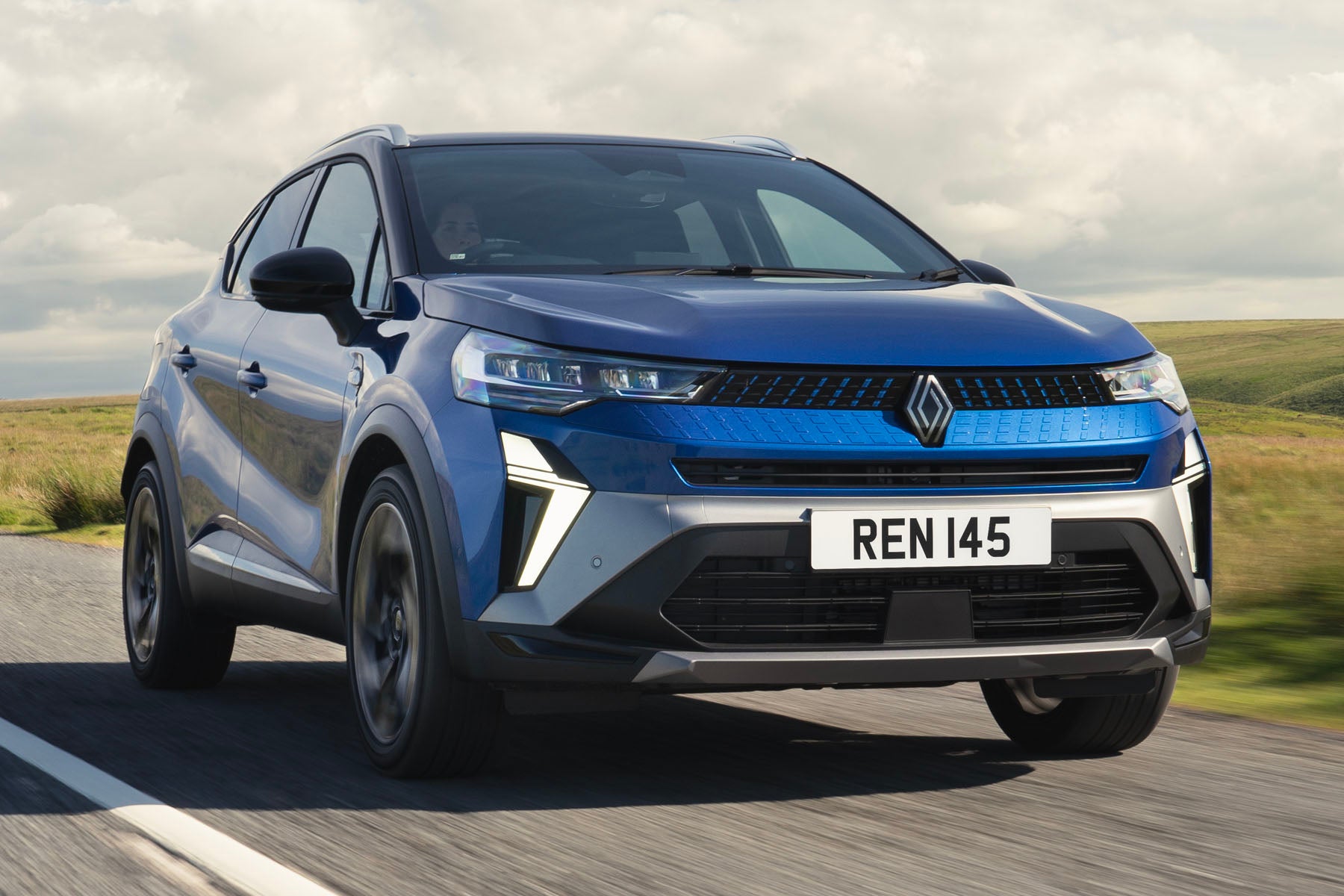Renault Captur Review 2025: Price, specs & boot space
Written by Andrew Brady
Quick overview
Pros
- Excellent value for money
- Bright and spacious interior
- Available with an efficient hybrid motor
Cons
- Petrol Captur feels slow
- Boot isn't as big as first appears
- Laggy infotainment on older models
Overall verdict on the Renault Captur
"The Renault Captur is one of the most popular small SUVs on sale today. While buyers continue to love the versatility and value-for-money it offers, a recent refresh means it no longer looks dated alongside newer models on the showroom floor."
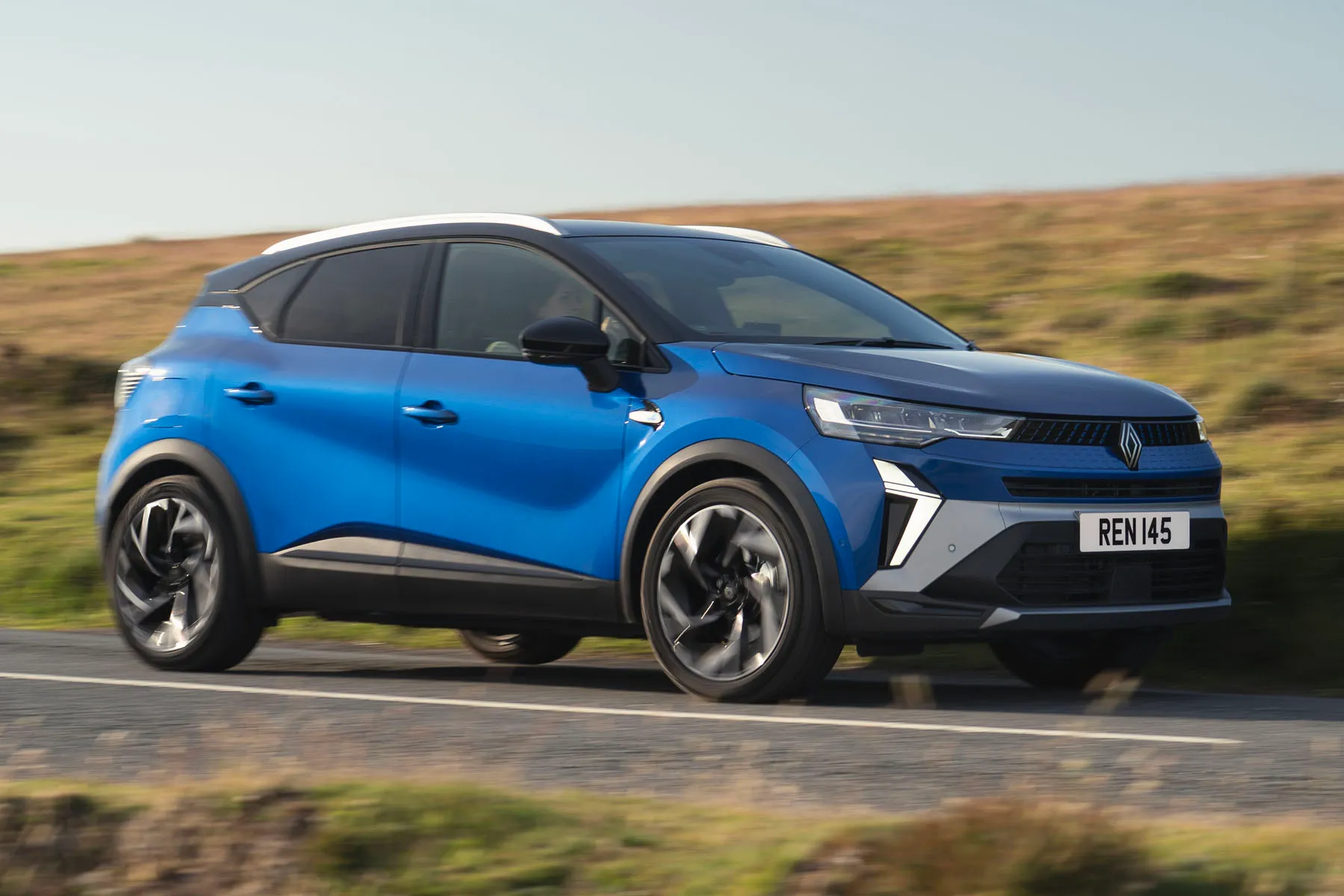
The updates to the 2024 Renault Captur are mainly cosmetic. It's been given quite a hefty front-end facelift, taking inspiration from Renault's latest models (and there are quite a few of them: from the Scenic and Rafale to the new Symbioz and last year's Austral).
Inside, the new Renault Captur gets a refreshed Google-based infotainment system that is more responsive than the old media display. It also brings built-in Google features (such as Google Maps and Google's voice-activated personal assistant).
The engine line-up has been updated a few times since the latest Captur first went on sale in 2020. You can now get it with petrol or hybrid power; we prefer the latter - not only is it more efficient, but it also provides a welcome power boost over the pretty lethargic 1.0-litre petrol. If you're wanting pure-electric power, you'll have to look at alternatives like the Hyundai Kona Electric or BYD Atto 3 instead.
Updates to the suspension mean the Renault Captur isn't quite the soft, comfy small SUV it once was. But it's easy and unintimidating to drive, with lots of technology on hand to act as a second pair of eyes. The Ford Puma is a sportier choice, while the Skoda Kamiq is a little more compliant on bumpy roads, but the Captur remains a very likeable all-rounder.
The Renault Captur's real USP is the value for money it offers. Not only is it one of the cheapest SUVs you can buy (prices for a new one start from around £21,000), it also punches above its weight in terms of standard equipment. And, if you're not fussed about having the latest updated Captur, you can pick up a pre-facelift car for as little as £12,000.
Looking for a used car for sale? We've got 100s of Renault Approved Used Cars for Sale for you to choose from, including a wide range of Renault Captur cars for sale. If you're looking for the older version, you need our used Renault Captur (2013-2019) review.
Is the Renault Captur right for you?
The Renault Captur is a small SUV that'll suit growing families. It's a very versatile little car, but its biggest selling point is the value for money it offers. Not only does it undercut competitors in price, but you also get a lot of desirable features as standard.
An extensive engine line-up over the years makes the Captur a strong competitor on the used SUV market. Some of the best engines are no longer available, though, and we think hybrid competitors like the Toyota Yaris Cross offer a more polished driving experience.
What other cars are similar to the Renault Captur?
There's no shortage of excellent small SUVs on the market today. The Nissan Juke is a popular choice, as is the Vauxhall Mokka and Peugeot 2008. If you want a car that's fun to drive and well-equipped, you should look at the Ford Puma or SEAT Arona, while the Skoda Kamiq represents good value for money.
We'd also recommend the Toyota Yaris Cross and Hyundai Kona, while it's also worth looking at pure-electric alternatives like the Volvo EX30 and MG ZS EV.
Comfort and design: Renault Captur interior
"The Renault Captur's cabin feels quirky and interesting, especially in higher-spec trim levels. A new infotainment system (and digital dials on Techno and Esprit Alpine models) mean it feels sufficiently high-tech, too."
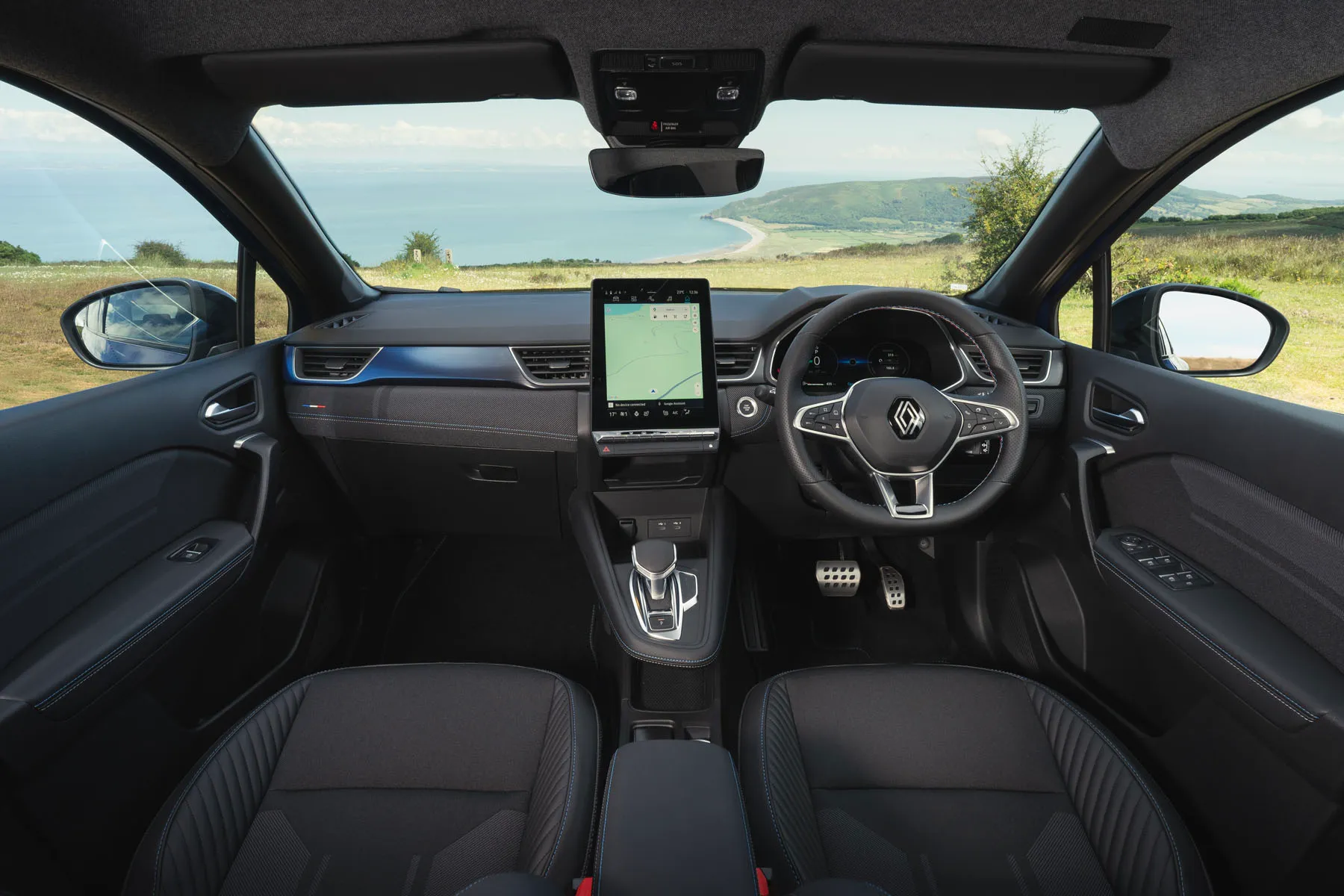
It's a very user-friendly interior, helped by physical buttons for the climate control system and toggles for things like turning off the irritating lane assist feature. The sliding rear bench (more on that below) helps with practicality, while there are plenty of useful cubbies and additional stowage areas. It's a cabin that's clearly been designed with family life in mind.
You sit higher in the Captur than in some small SUVs (such as the Skoda Kamiq), meaning you get a better view of the road ahead and a more natural seating position. Unfortunately, there's no adjustable lumbar support available in the Captur, but there's plenty of manual adjustment otherwise, including height adjustment for the driver's seat.
Quality and finish
While the Renault Captur doesn't exactly carry the banner for interior quality, it's no worse than an equivalent Skoda Kamiq or Nissan Juke.
Up front, you get soft-surfaced doors and everything around your eyeline is perfectly presentable. It's only when you get in the back seats that the materials are predominantly hard and scratchy.
All models come with a soft-touch dashboard, which looks and feels surprisingly premium, while high-spec models feel significantly better finished, with extra leather as standard.
Only time will tell how well the Captur copes with day-to-day family life, but we doubt the Captur's cabin will have too many creaks or rattles a few years down the line.
Infotainment: Touchscreen, USB, nav and stereo in the Renault Captur
The Renault Captur's infotainment offering has been significantly updated since the 2024 update. A portrait 10.4-inch touchscreen display is now standard across the range. It's a Google-based system, which is easy to use and fast to respond. On Captur Techno and Esprit Alpine models, it also provides acces to Google services, such as Google Maps. Alternatively, you can wirelessly connect your phone and use Apple CarPlay or Android Auto instead.
If you're looking on the used market, you'll have to shop around to find one with an infotainment offering to suit your needs. The most basic models got a seven-inch media system with Bluetooth, DAB radio, USB ports and Apple CarPlay/Android Auto.
Buy a Renault Captur S Edition (later known as E-Tech Engineered) and you'll get a portrait 9.3-inch touchscreen system. Unfortunately this does feel a bit dated compared to the later display, with frustratingly slow responses and slightly naff looking graphics.
Space and practicality: Renault Captur boot space
For a relatively small car, the Renault Captur is surprisingly spacious. The Renault Captur measures just over 4.2m long and a little under 1.8m wide. It's noticeably roomier than the Renault Clio and, indeed, the previous Captur. That's especially true in the front, where you'll find generous headroom and plenty of shoulder room. There's loads of storage, too, including large door bins and somewhere to place your phone in front of the gear lever. There's also a useful cubby under the centre armrest.
The Captur's party piece is its sliding rear bench. This means you can prioritise space for rear-seat passengers or the boot. With it in its most forward position, it's pretty cramped in the back, although kids ought to be happy enough. Slide it back and there's way more room and, although taller adults may still need to negotiate some extra room from those upfront, there's plenty of space for four.
Although three adults will be rubbing shoulders in the back, a fairly flat floor means the middle passenger won't be straddling a transmission tunnel and the middle seat is more comfortable than most.
With the bench as far forward possible, the Renault Captur's boot space can accommodate a huge 616 litres of luggage - that's more than a Nissan Qashqai. There's a caveat to that, though - the Captur E-Tech loses some handy underfloor storage space, so it's maximum capacity drops to 480 litres. Slide the rear bench back (where we think most buyers will keep it), and the petrol Captur can carry up to 484 litres of luggage, while the hybrid model manages just 348 litres.
Handling and ride quality: What is the Renault Captur like to drive?
"With light steering and a relatively high seating position, the Renault Captur's at its best around town. All models now come with rear parking sensors and a reversing camera, while there's an extensive list of advanced driving assist technology available across the range."
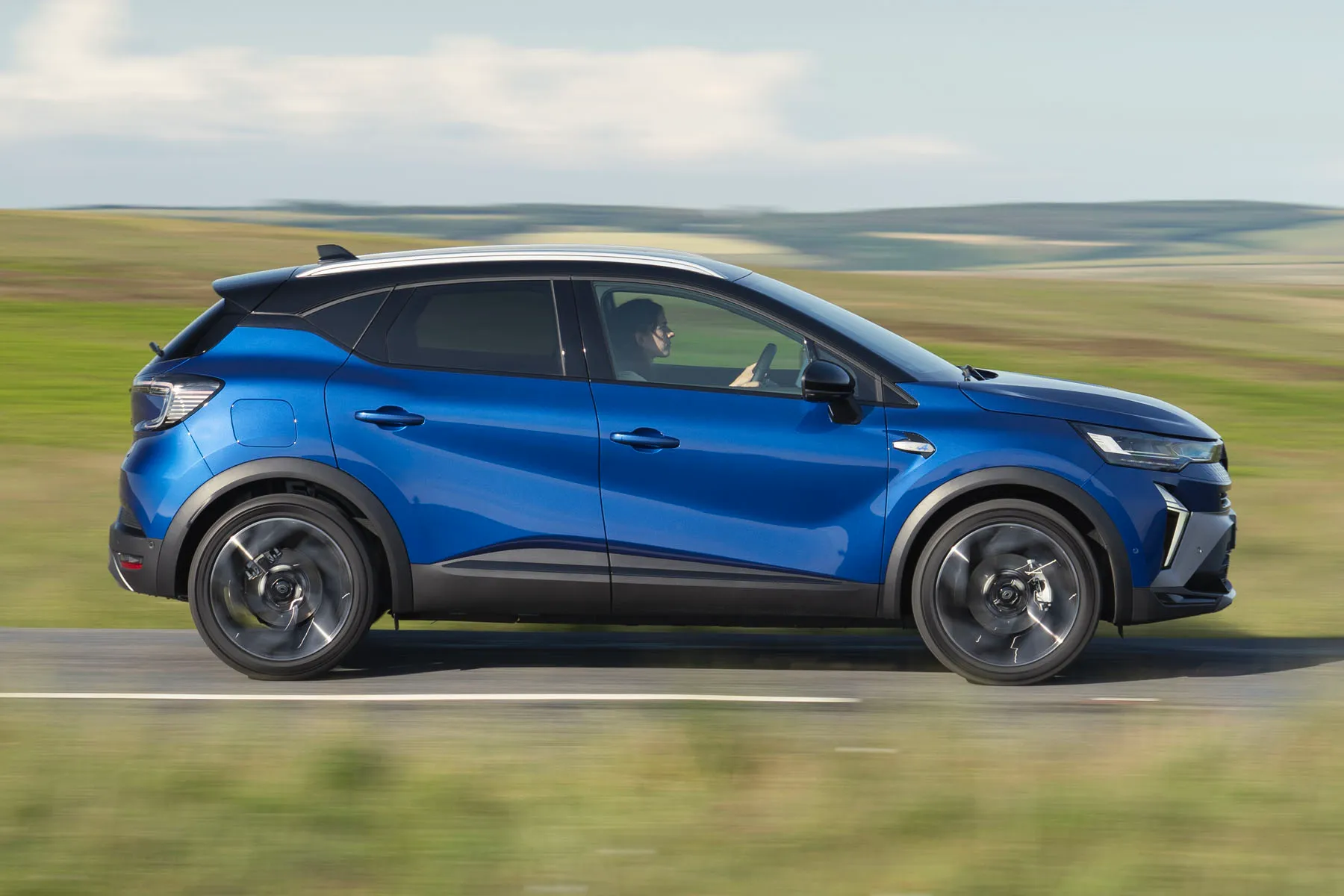
The turning circle on the Renault Captur is a little more boat-like than we'd expect for a compact SUV but, that aside, the Captur's a fun little car for tackling city centres.
It has a soft suspension set-up, which levels out bumpy roads really well, but it also means the car doesn't feel as composed as rivals in corners. Despite revisions to its suspension setup in 2024, it's still not as enjoyable to drive as a Ford Puma or SEAT Arona - the steering remains light even at speed and you'll notice its increased centre of gravity compared to the Clio in the corners.
Despite the extra weight it carries in the form of batteries and electric motors, the Renault Captur E-Tech doesn't seem to dwell on broken road surfaces any more than petrol models. That said, you'll soon start to notice the extra mass if you attempt to chuck it into a bend on a rural road.
What engines and gearboxes are available in the Renault Captur?
There's been quite a combination of engines offered in the latest Renault Captur since it first went on sale in 2020. The range today consists of just two, though: a petrol and a hybrid.
The petrol is badged the Captur TCe 90. It uses a small 1.0-litre engine that's combined with a six-speed manual gearbox that produces just 90PS - that's not a lot of power for a car of this size. Officially it'll accelerate to 62mph in a leisurely 14.3 seconds.
We think the hybrid Captur will be a better option for most buyers. Badged the Renault Captur E-Tech, this is a 'self-charging' hybrid that pairs a 1.6-litre petrol engine with an electric motor to produce 143PS. It's still not quick, but it'll reach 62mph in a much more palatable 10.6 seconds.
If you're in the market for a used Renault Captur, we'd recommend looking for one with the TCe 130 1.3-litre petrol engine. This is a more grown-up four-cylinder engine that feels noticeably brisker than the 1.0-litre, while also being a bit more refined. Alternatively, car buyers looking for the ability to travel under electric power alone should also consider the Renault Captur E-Tech plug-in hybrid. You don't get many PHEVs in this class, so it's a shame that it's now been dropped from the range.
At one point, you could even get the Renault Captur with a 1.5-litre diesel engine. This sold in small numbers and we wouldn't recommend it unless you really must have diesel power - perhaps if you cover a lot of motorway miles, for example.
It's worth noting that you can't get a four-wheel-drive Renault Captur. That's not going to be a big loss for many people (such technology is expensive and inefficient) but, if you do want a bit more confidence to tackle a farm track, consider a Suzuki S-Cross or Toyota Yaris Cross instead.
Refinement and noise levels
Unfortunately, refinement isn't the strongest point of the 1.0-litre TCe petrol engine in the Renault Captur. Like a lot of small, three-cylinder engines, you'll notice quite a lot of vibration and a distinctive thrum from the engine bay during acceleration. At least a six-speed manual gearbox is standard now - on earlier models, the entry-level engines came with a five-speed gearbox. That means the engine was running at a considerable amount of revs at motorway speeds.
The hybrid Renault Captur E-Tech is more refined, but it's still less than perfect. It'll awkwardly jump between electric and petrol modes, seemingly never settling into a rhythm. The older plug-in hybrid was better, as that could at least travel a significant distance under electric power alone. For true engine-off refinement, though, you might want to look at an electric vehicle instead.
Safety equipment: How safe is the Renault Captur?
There's plenty of safety equipment available on the Renault Captur and - pleasingly - most of it is standard across the range. Highlights include a lane departure warning and lane keep assist (which nudges the steering if you start to stray from your lane), while automatic headlights will never leave you driving in the dark. There's a blind-spot warning system, too, but this is only available on high-spec models.
ISOFIX child seat fixing points are fitted as standard on the outer rear seats, while Renault's E-Call system will automatically call the emergency services in the case of an incident.
All models come with a tyre inflation kit as standard but a space-saver spare wheel is available as an optional extra. Euro NCAP awarded the Renault Captur a four-star safety rating in 2024.
MPG and fuel costs: What does a Renault Captur cost to run?
"While the Renault Captur has been offered with a wide range of engines over the years, all of them have one thing in common: they ought to be very cheap to run."
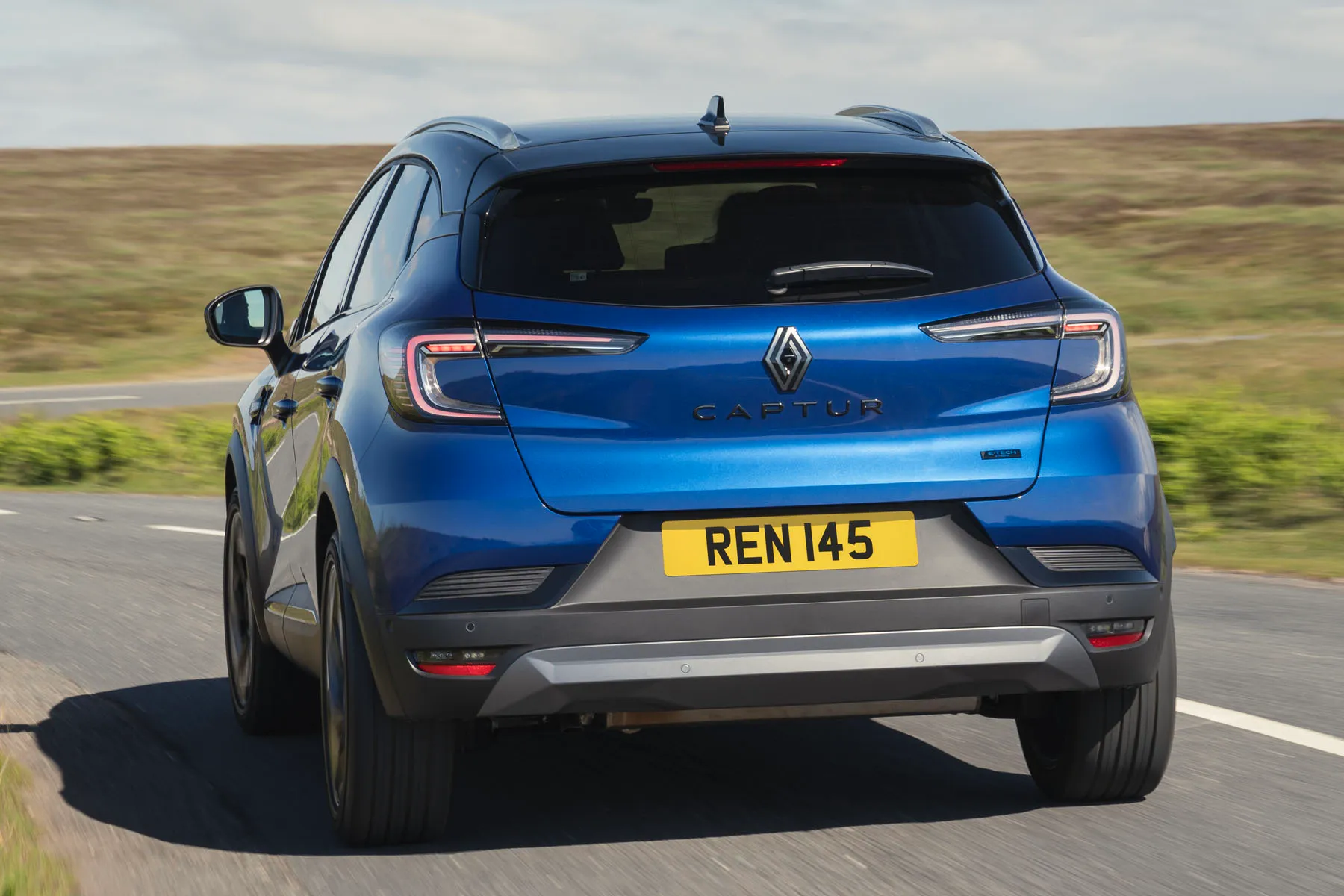
Out of the current Renault Captur line-up, the hybrid Captur E-Tech is the efficiency champion - officially capable of 60.1mpg. We're not saying you'll see that day in, day out, but we managed to beat the official fuel economy figure during our time with the Captur. With some gentle driving, the real-world efficiency figure of the Renault Captur E-Tech ought to be very impressive.
Not that the Renault Captur TCe 90 is particularly thirsty. Officially, the 1.0-litre petrol engine will return up to 47.9mpg. Like a lot of small, petrol engines, you might find that this figure drops slightly in the real world - mainly because the engine will require working hard to keep up with traffic. Around town, though, it ought to be a very efficient little car.
With these kind of efficiency figures, there's not a lot of reason to consider the diesel Renault Captur dCi. It sold in small numbers and was dropped from the range in 2021, although a used example might make sense if you cover a lot of miles. Officially, the diesel returns up to 58.9mpg.
Then there's the Renault Captur E-Tech plug-in hybrid. When it's fully charged, this can cover up to 30 miles under electric power alone, with the petrol engine only kicking in when you ask too much of the electric motor. Official figures are almost unbelievable (up to 188.3mpg) but they're heavily dependent on your use - if you charge it regularly and only cover short journeys, a tank of petrol will last forever. If you plan to travel back and forth from Land's End to John O'Groats... well, it won't be quite so efficient.
How reliable is the Renault Captur?
Renault's reliability has improved in recent years, although the brand still performed fairly poorly in the latest HonestJohn.co.uk Satisfaction Index. It ranked in 28th place - second from bottom, ahead of Vauxhall.
While we've heard of very few common issues with the latest Renault Captur, Renault's three-year/100,000-mile warranty is nothing special, unfortunately. Buy a Toyota Yaris Cross instead and, with regular dealer servicing, you'll be covered for up to 10 years
Insurance groups and costs
Insurance groups for the Renault Captur range from 11 to 16. That means any Captur model should be fairly cheap to insure, with the 1.0-litre petrol engine being the most affordable. As ever, we'd recommend shopping around for insurance, though - it's worth getting some quotes beforehand to avoid any surprises further down the line, especially if you're a new driver or have a less-than-perfect driving record.
VED car tax: What is the annual road tax on a Renault Captur?
The first year's car tax is based on CO2 emissions and forms part of the 'on the road' price of the car. That means, even if you're buying brand new, it's not a real concern. If you're buying a nearly-new example, it will have been paid when the car was registered.
After this, petrol Renault Captur models are currently charged £190/year in VED, while hybrid models qualify for a £10/year discount - bringing the annual bill down to £180/year.
How much should you be paying for a used Renault Captur?
"With an entry-level price tag of just over £21,000, the Renault Captur significantly undercuts rivals including the Ford Puma and Skoda Kamiq. You'll have to pay more for the desirable hybrid Captur E-Tech, but that still represents good value for money compared to the Toyota Yaris Cross and Hyundai Kona Hybrid."
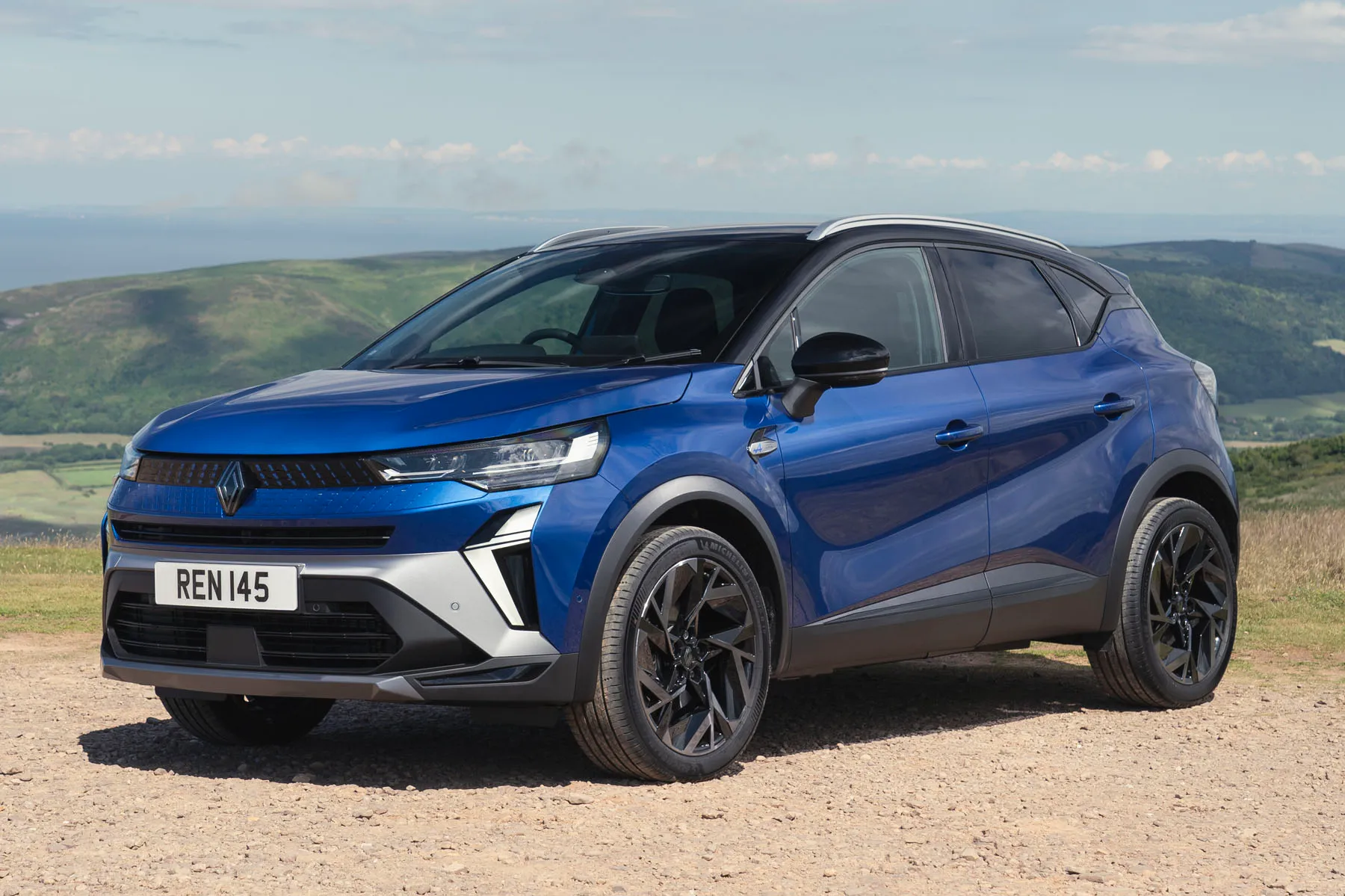
Shop around and you'll be able to save money on a pre-registered Renault Captur. These are cars that are usually advertised as ex-demonstrator models and are in stock at dealers, ready to go with delivery miles on the clock and at a discounted price compared to a new one. We've seen the latest 2024 Renault Captur advertised at dealers for less than £20,000.
If you're not fussed about having the new updated Captur, a pre-facelift model can be picked up for an even more affordable price tag. Expect to pay around £12,000 for a three-year-old Renault Captur Iconic with the 1.0- or 1.3-litre petrol engine, while the more desirable S Edition of the same age can be picked up for around £13,500.
Although you can no longer buy a plug-in hybrid Renault Captur, there are plenty available on the used market. Budget around £18,000 for a 2021 model.
Trim levels and standard equipment
Despite being an affordable entry-level model, the Renault Captur Evolution covers pretty much everything you could wish for. Spec highlights include the 10.4-inch infotainment system, wireless phone charging, a reversing camera, 17-inch alloy wheels and automatic air conditioning. It also comes with an extensive list of driver-assistance tech, such as cruise control, an active emergency braking system and emergency lane keep assist.
Step up to the mid-spec Renault Captur Techno and you get 18-inch alloy wheels, front/side parking sensors, electrically folding door mirrors, a modular boot floor, height-adjustable front passenger seat, multi-sense drive modes, built-in Google services for the infotainment system, a 10.25-inch digital driver display and two additional USB-C ports in the rear.
Topping the range, the hybrid-only Renault Captur Esprit Alpine comes with 19-inch esprit Alpine 'Elixir' alloy wheels, two-tone paint with contrasting black roof colour, front grille with 3D graphics, and gloss black window frames. The interior features esprit Alpine styling, aluminium sports pedals, auto-dimming frameless rear view mirror, flying console for auto transmission, driver and front passenger seat with electric height adjustment, heated front seats, heated synthetic leather steering wheel, sun visor with mirror and light, and adaptive cruise control with speed limiter.
Ask the heycar experts: common questions
Does the Renault Captur have parking sensors?
Is the Renault Captur an SUV?
Is the Renault Captur a good car?
Renault Captur cars for sale on heycar
Renault Captur1.5 dCi 90 Dynamique S Nav 5dr
201765,695 milesDiesel£174 mo£7,997
LN58NURenault Captur1.0 TCE 100 S Edition 5dr
202116,204 milesPetrol£211 mo£13,795
Fair priceCV107RPRenault Captur1.0 TCE 90 S Edition 5dr
202218,291 milesPetrol£220 mo£14,049
Fair priceWA89WZRenault Captur1.3 Mild hybrid 140 R.S. Line 5dr
202224,500 milesPetrol£225 mo£16,495
SA174TFRenault Captur1.0 TCE 90 Iconic Edition 5dr
202221,860 milesPetrol£192 mo£13,870
Delivery
Renault Captur Alternatives
Get our latest advice, news and offers
Keep me updated by email with the latest advice, news and offers from heycar.
By submitting you agree to our privacy policy
